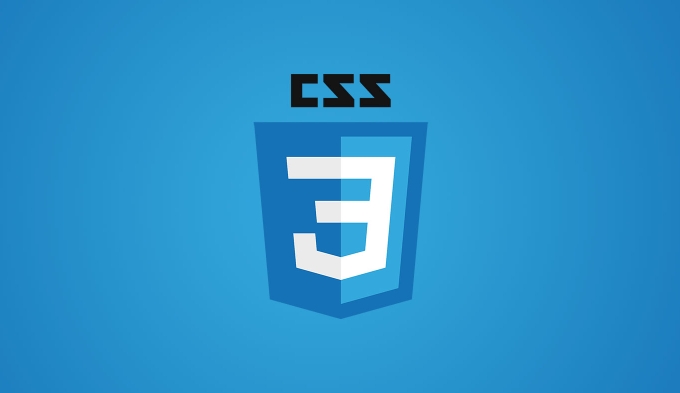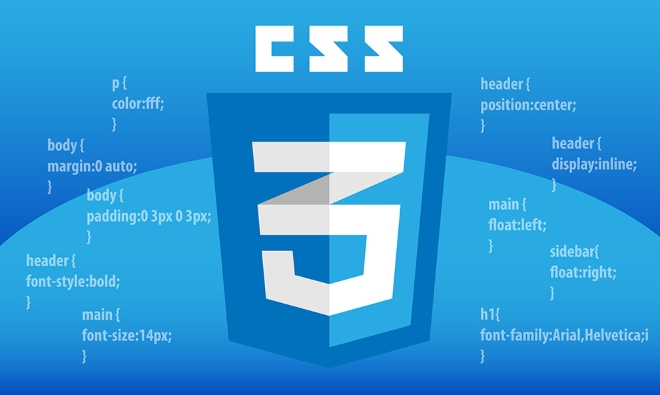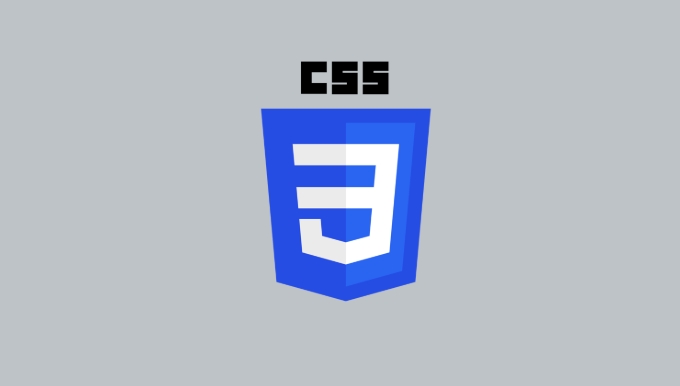Contrasting CSS display properties: block, inline, flex, grid
Jul 06, 2025 am 02:00 AMCSS display properties control webpage layout. Block elements take full width and stack vertically, inline elements flow within text without line breaks, flexbox aligns items in rows or columns with easy spacing, and grid manages two-dimensional layouts with precise row and column control. Use block for full-width stacking, inline for tight inline elements, flexbox for one-directional alignment, and grid for complex structured designs.

If you've ever tried to line up a few elements on a webpage or make something stretch full width, you’ve probably run into CSS display properties. They’re the backbone of layout in CSS, and knowing how block, inline, flex, and grid behave helps you control your page structure with confidence.

Understanding block and inline basics
These two are the oldest players in the game and still super useful today.

-
Block elements take up the full width available by default. Think of elements like
<div>, <code><p></p>, and<h1></h1>— they stack vertically and push other elements away. -
Inline elements, like
<span></span>or<a></a>, sit inside the flow of text. They don’t start on a new line and only take up as much width as needed. - Line up in a row by default
- Don’t wrap unless told to
- Can easily be spaced apart or pushed to edges using
justify-contentandalign-items
For example, if you have three <span></span>s next to each other in HTML, they’ll line up side by side until they hit the edge of the container. But three <div>s will each be on their own line.<p>One thing to note: you can't set width or height on inline elements the way you can with block ones. So if you want an inline element to size exactly, you might switch it to <code>inline-block.

Flexbox for one-dimensional layouts
Flexbox (display: flex) is great when you want things to line up in a row or column and stay aligned without too much fuss.
Once you apply display: flex to a container, its children become flex items. These items:
A common use case is navigation bars. You can center links horizontally and vertically in just a couple lines of code.
Also, flex items can grow or shrink based on space available. If you want all buttons in a group to stretch equally, flex-grow: 1 does the trick.
Just remember: flex is one-dimensional. It works best for rows or columns, not both at the same time.
Grid for two-dimensional control
CSS Grid (display: grid) is where things get more structured. Unlike flexbox, grid lets you define rows and columns together, giving you a full layout system.
You define columns and rows using grid-template-columns and grid-template-rows. For example:
.container {
display: grid;
grid-template-columns: 1fr 2fr 1fr;
}This would create a layout with three columns, where the middle one is twice as wide as the others.
Grid also makes it easy to place items exactly where you want them using grid-column and grid-row. Want a sidebar that spans two rows? No problem.
It’s especially handy for complex dashboard-style layouts where precise placement matters.
When to choose which
There's no single right answer — it depends on what you're building.
- Use block when you want full-width elements or need stacking behavior
- Reach for inline when working within a line of text or keeping elements tight
- Go with flexbox for simple alignment in one direction — menus, buttons, cards
- Choose grid when you need full control over rows and columns together
And sometimes, you’ll mix them. A grid layout might contain a flex container inside one of its cells.
It’s not complicated once you know the roles each plays.
The above is the detailed content of Contrasting CSS display properties: block, inline, flex, grid. For more information, please follow other related articles on the PHP Chinese website!

Hot AI Tools

Undress AI Tool
Undress images for free

Undresser.AI Undress
AI-powered app for creating realistic nude photos

AI Clothes Remover
Online AI tool for removing clothes from photos.

Clothoff.io
AI clothes remover

Video Face Swap
Swap faces in any video effortlessly with our completely free AI face swap tool!

Hot Article

Hot Tools

Notepad++7.3.1
Easy-to-use and free code editor

SublimeText3 Chinese version
Chinese version, very easy to use

Zend Studio 13.0.1
Powerful PHP integrated development environment

Dreamweaver CS6
Visual web development tools

SublimeText3 Mac version
God-level code editing software (SublimeText3)

Hot Topics
 How can I include CSS only on some pages?
Jun 11, 2025 am 12:01 AM
How can I include CSS only on some pages?
Jun 11, 2025 am 12:01 AM
There are three ways to selectively include CSS on a specific page: 1. Inline CSS, suitable for pages that are not frequently accessed or require unique styles; 2. Load external CSS files using JavaScript conditions, suitable for situations where flexibility is required; 3. Containment on the server side, suitable for scenarios using server-side languages. This approach can optimize website performance and maintainability, but requires balance of modularity and performance.
 Flexbox vs Grid: Understanding the Key Differences in CSS Layout
Jun 10, 2025 am 12:03 AM
Flexbox vs Grid: Understanding the Key Differences in CSS Layout
Jun 10, 2025 am 12:03 AM
Flexboxisidealforone-dimensionallayouts,whileGridsuitstwo-dimensional,complexlayouts.UseFlexboxforaligningitemsinasingleaxisandGridforprecisecontroloverrowsandcolumnsinintricatedesigns.
 Creating an Auto-Closing Notification With an HTML Popover
Jun 10, 2025 am 09:45 AM
Creating an Auto-Closing Notification With an HTML Popover
Jun 10, 2025 am 09:45 AM
The HTML popover attribute transforms elements into top-layer elements that can be opened and closed with a button or JavaScript. Popovers can be dismissed a number of ways, but there is no option to auto-close them. Preethi has a technique you can u
 What is 'render-blocking CSS'?
Jun 24, 2025 am 12:42 AM
What is 'render-blocking CSS'?
Jun 24, 2025 am 12:42 AM
CSS blocks page rendering because browsers view inline and external CSS as key resources by default, especially with imported stylesheets, header large amounts of inline CSS, and unoptimized media query styles. 1. Extract critical CSS and embed it into HTML; 2. Delay loading non-critical CSS through JavaScript; 3. Use media attributes to optimize loading such as print styles; 4. Compress and merge CSS to reduce requests. It is recommended to use tools to extract key CSS, combine rel="preload" asynchronous loading, and use media delayed loading reasonably to avoid excessive splitting and complex script control.
 How to use Lotties in Figma
Jun 14, 2025 am 10:17 AM
How to use Lotties in Figma
Jun 14, 2025 am 10:17 AM
In the following tutorial, I will show you how to create Lottie animations in Figma. We'll use two colorful designs to exmplify how you can animate in Figma, and then I'll show you how to go from Figma to Lottie animations. All you need is a free Fig
 Breaking Boundaries: Building a Tangram Puzzle With (S)CSS
Jun 13, 2025 am 11:33 AM
Breaking Boundaries: Building a Tangram Puzzle With (S)CSS
Jun 13, 2025 am 11:33 AM
We put it to the test and it turns out Sass can replace JavaScript, at least when it comes to low-level logic and puzzle behavior. With nothing but maps, mixins, functions, and a whole lot of math, we managed to bring our Tangram puzzle to life, no J
 External vs. Internal CSS: What's the Best Approach?
Jun 20, 2025 am 12:45 AM
External vs. Internal CSS: What's the Best Approach?
Jun 20, 2025 am 12:45 AM
ThebestapproachforCSSdependsontheproject'sspecificneeds.Forlargerprojects,externalCSSisbetterduetomaintainabilityandreusability;forsmallerprojectsorsingle-pageapplications,internalCSSmightbemoresuitable.It'scrucialtobalanceprojectsize,performanceneed
 Does my CSS must be on lower case?
Jun 19, 2025 am 12:29 AM
Does my CSS must be on lower case?
Jun 19, 2025 am 12:29 AM
No,CSSdoesnothavetobeinlowercase.However,usinglowercaseisrecommendedfor:1)Consistencyandreadability,2)Avoidingerrorsinrelatedtechnologies,3)Potentialperformancebenefits,and4)Improvedcollaborationwithinteams.






